eurovision ofertas casa rural cirugia tdah misterios ordenadores finanzas camiones divorcios
"Search Engine Journal" - 5 new articles
- Simple Yet Effective Charts For Helping New SEO Clients Understand Their Current Keywords
- How to Add Useful Content to Your Site. . . and Get Results
- With SEJ Tools You Won't Need Any Other Link Building Utility
- Weekly Search & Social News: 05/11/2010
- Why SEO is like The Biggest Loser
- More Recent Articles
- Search Search Engine Journal
Simple Yet Effective Charts For Helping New SEO Clients Understand Their Current Keywords
When you begin working with a new SEO client, it's always a great idea to help them understand their current state before moving forward. As part of that process, new clients might say something like, "we definitely rank for a number of keywords already, but we're not seeing the performance we would like". That's a great time to start digging into their analytics package to evaluate their current keyword set.
For example, are their keywords heavily branded, contain local qualifiers, contain target keywords, etc? Although some clients can navigate their way through a keywords report, it doesn't mean they can completely understand what's going on organic search-wise. The beginning of an SEO engagement is a great time to provide some keyword analysis (even if it starts with a relatively basic view of what's going on). I've found that some simple keyword charts can help clients clearly understand their current set of keywords, while speaking volumes about what needs to be completed SEO-wise.
Yes, You Are Ranking for Keywords, But…
I'll provide several scenarios that you might come across and how you can quickly show a strong visual of what's really going on. Then after presenting these charts to your clients, you could develop a plan for providing a more thorough analysis of your client's keyword situation. Also, if I was hired to complete an SEO technical audit, then I usually present these charts in the section of the audit focused on content optimization. It makes sense if you are analyzing how well a site's content is optimized and then provide these charts to support your findings.
Paid vs. {Actual} Organic
Depending on how sophisticated your client is, the most obvious place to start is the breakdown of paid versus organic search traffic. Although this might seem overly basic, the chart could help clients see a major discrepancy in paid versus organic keywords. I've worked for some clients in the past that leveraged paid search traffic for a large amount of their monthly visitors. I've found that showing the massive difference in organic versus paid search traffic can help gain SEO champions throughout the organization. The less a client spends on paid search, the more budget other marketing initiatives could receive (or the more budget other areas of the organization might receive). I do a lot of SEM work, but there should always be a natural balance between organic and paid search. Also, I mentioned "Actual" in the heading above. If paid search campaigns are not being tagged properly, those keywords could very well end up as "organic" in your reporting. Definitely make sure you know which keywords were truly organic or it could skew your analysis (and the perception your clients have of their current keyword set).
Showing The High Percentage of Paid Versus Organic Keywords Can Help Clients Understand an Important SEO Opportunity
Branded vs. Non-Branded
It's great when clients rank for their branded terms, but they really should rank for them… To me, it's not a huge win SEO-wise if company XYZ ranks for a number of terms related to XYZ. However, unless your clients are digging into their search analytics and truly understanding their keyword breakdown, they might not realize how much of their organic search traffic is coming from branded keywords. For example, you might find that branded keywords dominate and non-branded keywords are non-existent. I've provided a quick chart below that illustrates a client with a heavily branded keyword set. There are times during a presentation that I don't need to say a word, which if you know me, is probably hard to believe. :) By presenting the chart below, a client can quickly understand the opportunity they have.
Displaying the Breakdown of Branded Vs. Non-Branded Keywords Can Reveal a Lack of Content and/or Content Optimization
Keywords With A Local Qualifier
If you're a local business, then keywords that contain a local qualifier are extremely important. For example, keywords that contain the town, city, zip code, or state. For local businesses, searches that are local in nature are their money terms. If you perform a quick keyword analysis for a local business client, you might find a situation where almost no keywords leading to the site contain a local qualifier. Coincidentally, that also might be why "the phone just isn't ringing" for that business. Unfortunately, if you have no presence in local search and your company relies on (new) local business, then you're dead in the water. The yellow pages probably can't save you now. Depending on how sophisticated your client is, their jaw might drop when you present a chart that shows no local searches. It can also set the stage for developing a stronger local search strategy.
Percentage of Target Keywords
After performing thorough keyword research, you will typically end up with an extensive list of target keywords by theme. These are keywords that can yield thousands of other keywords that stem off of them. I've previously written about the power of the long tail of SEO and a client's target keywords provide the base for the long tail. Although this might be more extensive of a project than the ones listed above (since several keyword themes will be part of the analysis), showing the percentage of keywords that led to the site that contain target keywords can be a telling story. For example, imagine your business focused on mountain bikes and only 2% of the keywords driving traffic to the site contained the words "mountain bikes" in them. That's a simple example, but can help your client understand the content they need to create and the optimization that's necessary.
In conjunction with showing a chart like this, you can also run a site command combined with an intitle command to show clients how many pages contain their target keywords in the title tag. This would show an obvious lack of page optimization. For example, site:yourdomain.com intitle:{target keyword}. I remember presenting an audit to a very well known CPG brand and showing their senior brand manager how none of their pages had a specific target keyword in the title tag (and it was an important keyword directly related to the category they were targeting). An awkward silence followed…
Converting Keywords vs. Non-Converting Keywords
By showing your clients the percentage of keywords driving conversion, they can clearly understand the impact of their current keyword set. Along the same lines, the percentage of keywords generating revenue is also important (for e-commerce sites). Keep in mind that conversion can mean several actions and events on your site and not just a purchase. For example, you might find that only 4% of keywords led to conversions, and that accounted for less than 10% of your revenue. Or you might find that 30% of keywords led to conversion, and that accounted for 75% of your leads. Based on your findings, you can quickly create charts to show clients what's going on keyword-wise. At that point, you could develop a plan for identifying new keywords to target and how to rank for them.
Summary
When beginning work for new SEO clients, there are definitely some quick and effective visuals you can present that help them understand their current keywords. Your analysis can also help you set the stage for future SEO efforts. An SEO roadmap (or a list of core projects for the year) is critically important, but you first need buy-in from key stakeholders. These visuals can help you gain that buy-in. You've probably heard the old adage, "a picture is worth a thousand words". Well in SEO, "a good chart can get a thousand people backing your efforts". And that's never a bad thing. :)
Check out the SEO Tools guide at Search Engine Journal.
Simple Yet Effective Charts For Helping New SEO Clients Understand Their Current Keywords
How to Add Useful Content to Your Site. . . and Get Results
It's good to know that you need useful content on your site. It's even better to know why you need useful content on your site (If you aren't sure what I mean, you might want to read: For Google, the Only Content is Useful Content.
But how do you get it? What separates so-so text from highly compelling copy that draws in readers (and prospects), then turns them into customers? Let's see what other online marketing pros have to say:
Develop a great resource – Matt Cutts, Google
"Have a well-rounded site: great content has to be the foundation of any good site because mediocre content tends not to attract exceptional links by itself, and if you're trying to get exceptional links on crappy content, you're going to be pushing uphill. It's much better to have great content that gets those links naturally. Rather than having something that's not that interesting and trying to push, push, push and bug people and send out spam emails asking for links and those sorts of things. So a well-rounded site has interesting, useful content, great resources, great information and that naturally attracts links."
Post cheat sheets and checklists – Sam Niccolls, SEOmoz
"Cheat sheets and checklists make great linkbait – cheat sheets are great for driving site engagement, links and bringing people back to the site."
View an example of a checklist: A Checklist of Preparing a Working WordPress Blog http://blog.overscaled.com/index.php/2009/04/a-checklist-of-preparing-a-working-wordpress-blog/. Cheat sheets are clearly laid-out steps or tasks which lead to a tangible goal, something like "How to automatically post Del.icio.us links to your blog" that help folks streamline a process.
Let your customer speak for you – Bryan Eisenburg, FutureNow
"Leverage the voice of the customer (often obtainable from social media, etc.) in product descriptions, category groupings, reviews and ratings, and letters of recommendation. Your customer can say things about your business that you cannot say."
So if you don't already have testimonials, quotes and success stories in your marketing arsenal, it's time to go get some. Be sure to rotate or "freshen" them, as well. A 5-year-old testimonial won't persuade nearly as well as a current endorsement.
Answer questions that lots of people are asking – Dan Thies, The SEO Coach
Research questions that your target audience wants answered by:
- Using Yahoo Answers
- Participating in forums and groups
- Trying general keywords in search
- Collecting 10-20 top questions being asked, including questions that people don't ask, but should
- Identifying pre-sell questions and post sell questions
- Creating social bookmark feeds that populate a web page on a given topic
Turn real-time conversations into web content – Rand Fishkin, SEOmoz
Your tweets, chats, facebook status updates, and the like can be turned into a web page of topical content. For example, any of your tweets about a given topic, like organic SEO, can be compared and edited to become unique content that belongs only to you. Also, realtime chat on your website can be edited into user-generated, long tail keyword rich content on your site. These are sources of content that typically do not get indexed in search engines anyway, but could be useful content with a little editing.
Leverage syndicated content effectively – Rand Fishkin
Syndicated content, including articles, products, images, videos, etc., present several problems if you reuse it on your site:
- It's duplicate content.
- Most require you to link back to the original source.
- The content might not earn search traffic.
However, you can make syndicated content unique to your site by:
- Adding an editor's note.
- Rewriting the piece and/or headline. Keep in mind that, often, you only need a small portion of the original piece and can then "write around" it to flesh out your own content.
- Adding user-generated content (such as allowing comments).
Use a few of these solutions to earn link references to your content, and it will likely rank well in search engines
More ideas from Matt Cutts:
- Original research can mean great gains for your site. If someone does even a little bit of work to dig into a subject, they are a lot more likely to get links.
- If you do a conference presentation, remember to post it. That's a great way to get links because people will live blog it, link to your website, etc.
- Get a blog and establish yourself as an authority. There's no excuse for a company today not to have a blog. It's really not that hard to do. Posting funny pictures is one way, but build your blog up as a resource of good articles, how-tos, tutorials, etc.
- Make sure your site has good site architecture. You'd be amazed at how many sites don't think about "Can my site be crawled? Can my site URLs be bookmarked? Can Google get to all the pages on my site?" Make it easy to link to individual pieces of content on your site.
HubSpot recently published "Marketing Data," compiled from 2,500 businesses. The following chart explains again why you need a well-executed content development plan:
This chart shows that sites with more web pages indexed in Google tend to get more leads than sites with fewer indexed web pages. Note the exponential increase in leads when a site reaches a certain "tipping point" (the ascending arrow) with its volume of indexed web pages.
Check out the SEO Tools guide at Search Engine Journal.
How to Add Useful Content to Your Site. . . and Get Results
With SEJ Tools You Won't Need Any Other Link Building Utility
I have already said previously that the most awesome feature of SEJ Tools is that they consolidate plenty of SEO tasks and aggregate various SEO options. Today I am going to overview all its link building utilities and show how they help at every step of building your resource backlink power.
1. Find backlink opportunities
Site Finder, a handy feature inside the SEJ Toolset, grabs the top ten domains ranked first for the provided keyword and researches their backlinks.
It allows you to enter a keyword phrase and then it automatically finds and ranks domains that link to the top ten Google results for that keyword phrase. It then uses a combination of ranking factors to determine how valuable a link from one of the returned domains would be to your site.
All the sites linking to your competitors are compiled in a table containing:
- Domain name of your potential backlink provider;
- The site "quality" (represents the summary of the below listed metrics);
- Connections (number of competitors the site links to);
- ACRank (powered by MajesticSEO);
- mozRank (powered by SEOmoz);
- Page authority;
- Backlinks (Number of backlinks from that page).
2. Keep track of your link building process
With such a huge database of the potential backlink providers, all you need to do is to approach each of them. This is when you need a solid utility to keep track of the link statuses you are building. SEJ Tools' Link Manager is there to help.
You should add all link opportunities you are coming across:
- Specify the link status (if it is queued, active, declined, etc);
- Provide the link details (anchor text, URL);
- Select the link type (user submitted; Content exchange, paid, blog comment, organic link, Competitor backlink)
- Set the listing creation date (to track the status, etc);
- Specify the link placement (where it is located, the type of the linking site, etc);
- Provide the link tags (for further reference and analysis)
- (Optionally) Assign tasks and add comments. If you're a task administrator, you can assign a link record task to another user on your account.
Of course, you can add links in bulk or import from the local file.
All the link statuses you are adding are organized via Website Directory that is a database of all your current and planned backlinks. The best thing about the tool is that it makes your link building records searchable – which make it much easier to refer to your previously built connections.
With it, you can search your links:
- Across all website profiles;
- Within one of the selected profiles;
as well as based on:
- The PageRank,
- Quality Analyzer Score,
- Active Links,
- Whether or not they Sell Links.
3. Organize your link building contacts
The Contact Manager is used to manage relationships with website owners and editors. Contact records not only contain relevant contact details, they also provide links to website records and link records that are related to the contact.
The tool is very useful for compiling and searching your valuable (link prospect) contacts and organizing them by target project or website.
All your link building contacts are organized in a table containing:
- Name;
- Email address;
- Associated websites;
- Quantity of live links so far;
- Type of relationships:
4. Research the links you have built
Whenever you start wondering how many links have been built so far, you may use the Backlink Explorer feature that allows you to get an advanced look at its backlinks. The tool is built in collaboration with Majestic SEO and provides a few awesome features for link builders.
For any given URL the tool will return the table of backlinks. Each line in it contains the following data:
- The full URL of a linking page;
- The linking page ACRank (A-Citation-Rank: a very simple measure of how important a particular page is by assigning an integer value from 0 (lowest) to 15 (highest) depending on number of unique external domains linking to the page);
- The link anchor text;
- Nofollow attribute presence (yes/no);
- Image link (yes/no).
Besides, you can add any of the links to the link manager or hide any of them.
Naturally, the whole table may be exported, filtered and modified.
Which link building task do you usually need help with? Let SEJ Tools help you out!
Check out the SEO Tools guide at Search Engine Journal.
With SEJ Tools You Won't Need Any Other Link Building Utility
Weekly Search & Social News: 05/11/2010
Hello and welcome to another edition of '7 Days of Search and Social' – your weekly feast of SEO and social search goodiness. Maybe it was just me, but it did seem a little light last week. Adter 56 weeks, it becomes harder and harder to find new and interesting content that hasn't already been done to death. Heck, it's hard enough just coming up with things to write about. Have no fear though, there's still PLENTY of reading, just not as massive as usual, (some of you saying YAY on that I'm sure…hee hee)
Lead Story
Nada, butkis… a snoozer!
For the first time in some 56 weeks, there really wasn't anything I'd call a 'big story' out there. Sure, Google had the new interface… but even that wasn't enough to get me going.
So, we're just going to get right into it ok?
Oh, hey, since I have the space, I might as well highlight the new video gallery over on the SEO Dojo. We put it up last week, drop in for the best in SEO related videos from around the web.
On with the show
Quick Nav Links – Talk of the Town – Geek Central – Social Search – Going Vertical – Videos – Tools – Patents -
Talk of the town
- SEO Magic Bullet: 2010 Edition – is a post I put up on the Trail last week to lament the all-to-often occurance of people that take search patents and IR papers as gospel. Just STOP IT ok? Anyway, please give it a read and spread the word!
- Five Fatal Flaws in a Link Request – if you're a link hound or are doing blogger outreach, there are some great tips in this one as far as what NOT to do.
- Why You Should Stop Reading "How To" SEO Content – as many of us know, one can't believe everything they read out there in the blogoshpere. Every situation is unique and your strategy needs to be as well.
- Why targetting competitive keyterms could break your small business – an interesting post from a more recent addition on my radar, Kay Dinsdale. This one tells the tale of woe when targeting top head (generic) terms can break the bank. Start on the long tail my friends!
- Home Pages Suck On Google – Barry (Welford) had a passionate prose on SEP last week with some analysis on home pages and how blogs tend to have a wider dispersal of links.
- How To Build Links Faster: 5 Tips For Faster Link Qualification – Garrett continues his world tour with a good post on SEL for qualifying prospects before the outreach program begins.
- A Natural Link Love Story – what can I say? An interesting and entertaining post over on SEOmoz from Dr. Pete. I do enjoy posts that play with analogies. Nicely done.
- B2B SEO: Content Sourcing & Optimization – I for one am ALWAYs nervous about outsourcing content. Lee Odden looks at digital asset management and more.
- Is SEO bullshit? – our pal Goosh, took a second run at the SEOBS blog post from last week. Have no fear, I'll give u the spoiler alert, SEO ain't bullshit. Hee hee
- Blogger Outreach: The Good, The Bad, and the Ugly – what gives with all the 'outreach' stuff this week? Lol. This entry I found over on 10e20 – a worthy addition to the list.
- Please help my experiment to see if Google Starred Results affect rankings – Patrick over at Blogstorm is looking for a little community involvement with some experiments/research he's doing. Why not spare a few moments for him?
- Do results for "SEOBook sucks" prove that Google doesn't use latent semantic indexing? – oh my he's didn't just go there did he? Hugo Guzman was looking at some SERPs and suggesting that semantic analysis isn't one of Google's priorities. Interesting….
Quick Nav Links – Talk of the Town – Geek Central – Social Search – Going Vertical – Videos – Tools – Patents - Search Geek Central
Quick Nav Links – Talk of the Town – Geek Central – Social Search – Going Vertical – Videos – Tools – Patents -
Search Patents
Phrase-based detection of duplicate documents in an information retrieval system
Microsoft
Yahoo
Determining related terms based on link annotations of documents belonging to search result sets
/end SOSG session
Quick Nav Links – Talk of the Town – Geek Central – Social Search – Going Vertical – Videos – Tools – Patents - Check out the SEO Tools guide at Search Engine Journal.
Weekly Search & Social News: 05/11/2010
Why SEO is like The Biggest Loser
Few television shows are as close to a one-to-one comparison to Search Engine Optimization like The Biggest Loser. From the personal trainers to the eliminations to the goal of the show, trimming down an SEO site is eerily similar to the weekly weight-loss programming seen frequently on NBC.
Every contestant is obese. When a SEO is first contacted by an internet business, whether to join the In-House team or as an outside consultant, it is very rare that the website they start work on is doing well at all. Almost certainly, the website will be fat, out of shape, and will require work, whether through link building (working out), or on-site optimization (diet and lifestyle). If things were working out great and the person had great control of their site or their SEO services, they wouldn't be contacting you, the personal trainer.
The process takes a long time. SEO is not a quick fix. While we can make some quick, immediate changes to a website (diet and lifestyle), it takes long term commitment to link building (exercise) and maintenance of the website to get to our ideal image, which is a front page rankings. Hopefully, these front page rankings will convert traffic into customers (dates!).
Every person requires a different trainer style. Every client and company is different. Some clients will require ninety e-mails and countless phone-calls to finally change their title tags (dietary habits), while others will do so instantaneously. Some of these clients will like you a little too much and start calling you even when you shouldn't be working. This happened to Bob Harper in Season 8 with Amanda – I know, I thought it was a little weird too.
The less efficient contestants get cut. Many times you will have to eliminate entire parts of a website and restructure them to get your ideal picture. At the end of the process, you will be left with the best parts of your website, and those parts will be in the best shape of their lives, due to the link building and on-site optimization that was implemented throughout the process.
Unfortunately for the contestants (and the SEOs getting paid), the show ends. Whether it's by mutual breakup, the company folding or underperformance by one or both parties, the website no longer has its personal trainer. This, of course, can lead to..
.. the contestants getting fat again. Ranking first doesn't mean you have to stay first. Many times websites will lose their dedication to link building, start scaling inefficiently, and get passed up by fitter, sexier competitors. Many of these contestants were fat in the first place because they had no concept of optimal SEO practices, and if they choose to never take them up or really learn them, they're bound to get fat again.
So what lesson can we pull from this tale of obesity and sorrow? Learn your SEO, continuously practice it, and, for heaven's sakes, work out. And I don't mean link build, please get in the gym.
I don't want to see you on that show.
Check out the SEO Tools guide at Search Engine Journal.
Why SEO is like The Biggest Loser
More Recent Articles

Click here to safely unsubscribe now from "Search Engine Journal" or change your subscription or subscribe
Unsubscribe from all current and future newsletters powered by FeedBlitz
Your requested content delivery powered by FeedBlitz, LLC, 9 Thoreau Way, Sudbury, MA 01776, USA. +1.978.776.9498
miércoles, 12 de mayo de 2010
5 new articles
Suscribirse a:
Enviar comentarios (Atom)
Seguidores
Archivo del blog
-
▼
2010
(127)
- ► septiembre (7)
-
▼
mayo
(20)
- 6 new articles
- 2 new articles
- 6 new articles
- 4 new articles
- new articles
- 7 new articles
- 5 new articles
- 4 new articles
- 7 new articles
- 4 new articles
- Search Engine Journal - 5 new articles
- 5 new articles
- 4 new articles
- 2 new articles
- Search Engine Journal - 6 new articles
- 3 new articles
- <!-- AOL_MESSAGE --><!-- Your FeedBlitz Updates ...
- <!-- AOL_MESSAGE --><!-- Your FeedBlitz Updates ...
- <!-- AOL_MESSAGE --><!-- Your FeedBlitz Updates ...
- <!-- AOL_MESSAGE --><!-- Your FeedBlitz Updates ...
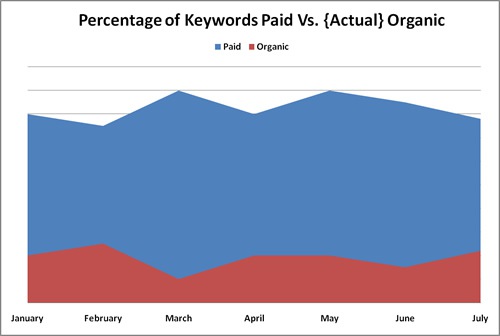


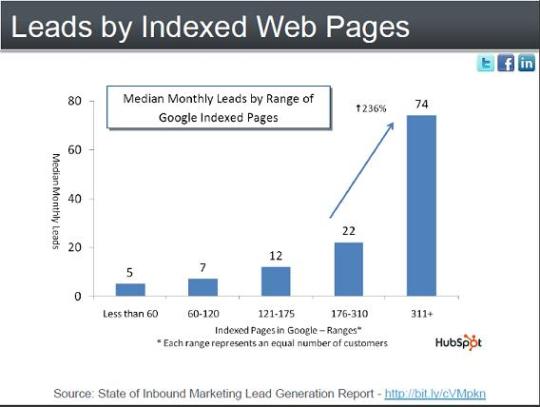
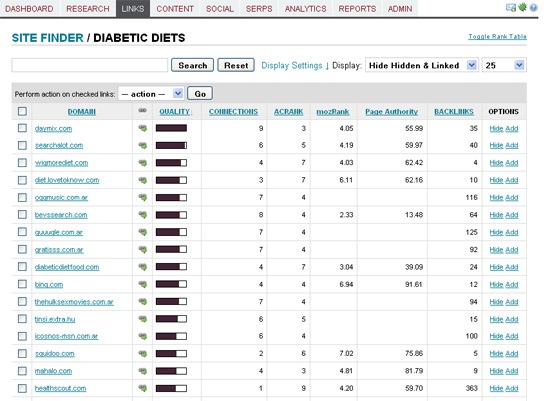
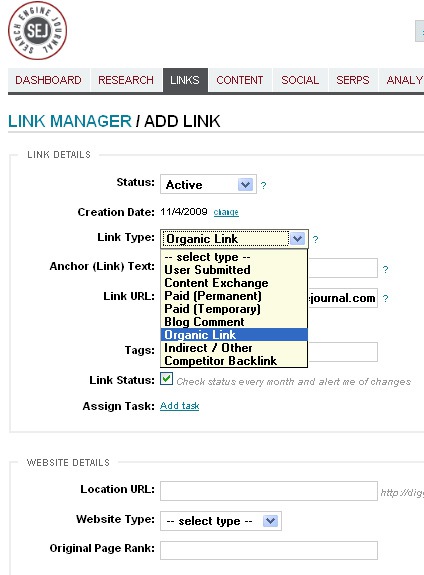
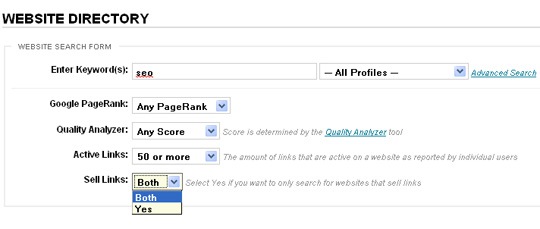
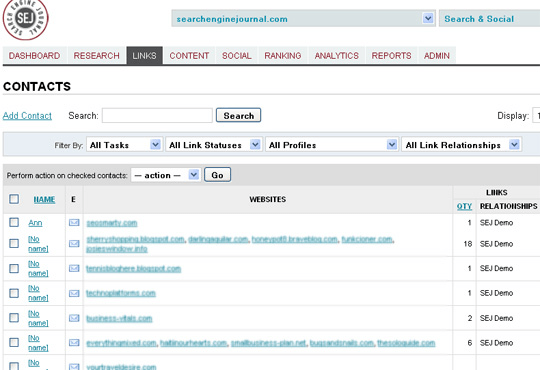
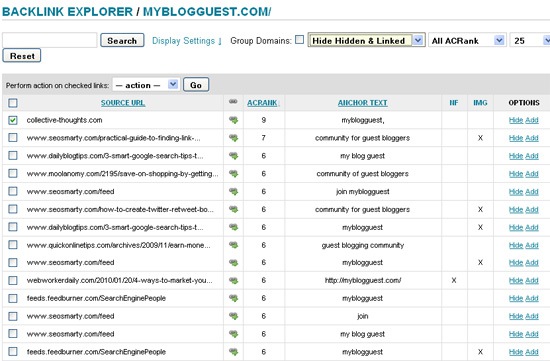


No hay comentarios:
Publicar un comentario